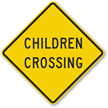Grieving mom: three-point child seats are inadequate
Eight years after her four-month-old daughter died as a result of car crash injuries, Pennsylvania mom Darla Johns is advocating for safer car seats. Johns’ daughter Aryn Mills was riding in a car with a three-point harness that her family now claims was defective. “She was always happy and giggling. She’d laugh at the ceiling fan,” Johns remembers. “She was a good baby,” she told local TV station, ABC 6.
Aryn’s family is now suing, claiming that the three-point car seat harness she was riding in was unsafe. Family attorney Stewart Eisenberg explained, “Starting with the flimsy padding… and the handle that protrudes up and gets in the way of someone’s head during a frontal collision… This seat belt is totally, totally inadequate.” Safety experts recommend a five-point car harness, which restrains a child’s shoulders and hips. A three-point harness secures the child only at the shoulders and between the legs.

From Jim Champion.
In Aryn’s case, the three-point harness allowed her body to “shift upward during the crash.” Explained attorney Eisenberg, “She hit the handle on the car seat and it crushed her skull and she died… If she was properly restrained, she wouldn’t have moved at all.” He also claims that the infant wouldn’t have been injured if properly restrained.
Though the brand of car seat in Aryn’s case is unavailable in the U.S., similar three-point harnesses are available, as some may meet minimum safety standards. While the car seat manufacturer claims that the car seat wasn’t defective, safety experts claim that three-point seats are simply unsafe. Another safety element of a safe car seat is “large, close-fitting, deeply padded side wings,” which are “another critical feature” that Aryn’s seat did not have.
The National Highway Traffic Safety Administration (NHTSA) told WABC that it expects a new side impact test to be issued later in the year. NHTSA also says it “continuously evaluates… child passenger safety and child restraint designs, and updates the standard as needed to address a safety issue.” The Administration offers parents an online guide to selecting the appropriate car seat for their child, available online here.
The American Academy of Pediatrics posts its own guidelines, related to the child’s age, height, and weight. Infants and toddlers, the AAP states, should use rear-facing car seats until age 2, or until they “reach the highest weight or height allowed by the car seat manufacturer. There are three types of rear-facing seats — rear-facing only seats, convertible seats, and three-in-one seats — and features vary within each category. Read more about installation guidelines for car seats as well as seat belt guidelines for older children, and download the Academy’s Car Seat Check app online.
You can also check out Consumer Reports’ top reports on car seats online, and be sure to check in with your car seat manufacturer periodically about any recalled car seats and child harnesses.
Category: News & New Products, Road safety, Traffic law


















